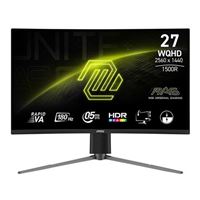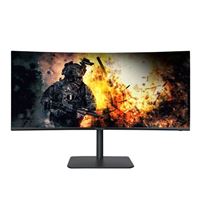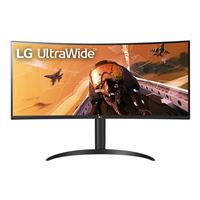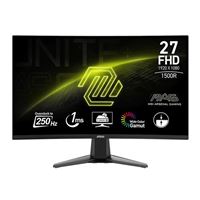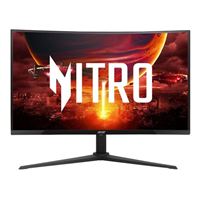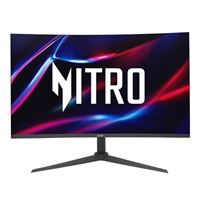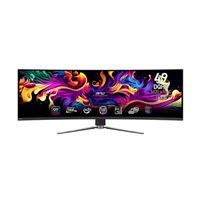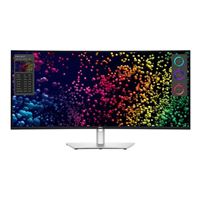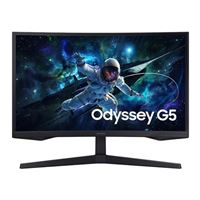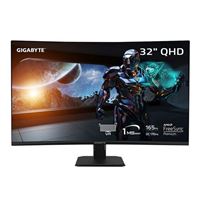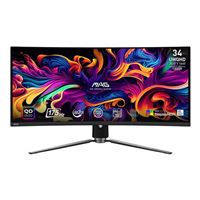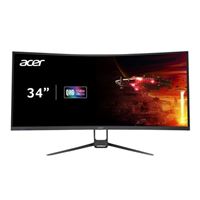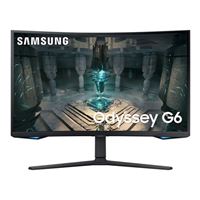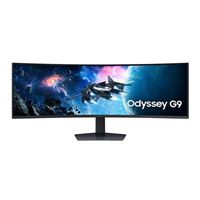Special Offers / Advertisements
Compare up to 4 items
New list of matching products
X
Sorry, you may compare a maximum of 4 items at a time.
Please clear one or more of your compare items before adding another-
SKU: 726844
- AMD FreeSync Compatible
- HDMI DisplayPort
- Flicker Safe
- HDR Ready
- AMD FreeSync Compatible
- HDMI DisplayPort
- Flicker Safe
Usually ships in 5-7 business days.Our price $159.99Original price $179.99Save $20.00 -
SKU: 668830
- Adaptive-Sync
- HDR
- HDMI DisplayPort
- Frameless Design
- Night Vision Mode
- Adaptive-Sync
- HDR
- HDMI DisplayPort
Usually ships in 5-7 business days.Our price $199.99Original price $229.99Save $30.00 -
SKU: 761056
- AMD FreeSync Premium Compatible
- DisplayPort HDMI
- ZeroFrame Design
- 1ms Turbo Visual Response
- AMD FreeSync Premium Compatible
- DisplayPort HDMI
- ZeroFrame Design
Usually ships in 5-7 business days.Our price $219.99Original price $429.99Save $210.00 -
SKU: 610105
- AMD FreeSync Premium
- HDR
- HDMI DisplayPort USB Type-C
- Game Mode
- 3-Side Virtually Borderless Display
- AMD FreeSync Premium
- HDR
- HDMI DisplayPort USB Type-C
Usually ships in 5-7 business days.Our price Add to Cart to see price -
SKU: 729046
- FreeSync Compatible
- HDMI DisplayPort
- Flicker Free
- Blue Light Filter
- FreeSync Compatible
- HDMI DisplayPort
- Flicker Free
Usually ships in 5-7 business days.Our price $149.99 -
SKU: 742809
- Adaptive Sync Compatible
- Narow Bezel Design
- HDMI DisplayPort
- Adaptive Sync Compatible
- Narow Bezel Design
- HDMI DisplayPort
Usually ships in 5-7 business days.Our price $149.99Original price $179.99Save $30.00 -
SKU: 244566
- FreeSync
- HDR
- HDMI DisplayPort
- Low Motion Blur
- FreeSync
- HDR
- HDMI DisplayPort
Usually ships in 5-7 business days. Limited availability. May not be in stock at time of order. No back orders.Our price $369.99 -
SKU: 675140
- AMD FreeSync Premium
- HDMI DisplayPort
- Zero Frame Design
- ComfyView
- AMD FreeSync Premium
- HDMI DisplayPort
- Zero Frame Design
Usually ships in 5-7 business days.Our price $169.99Original price $229.99Save $60.00 -
SKU: 769661
- AMD FreeSync Premium Compatible
- HDMI DisplayPort
- Zero Frame Design
- AMD FreeSync Premium Compatible
- HDMI DisplayPort
- Zero Frame Design
Usually ships in 5-7 business days.Our price $159.99Original price $229.99Save $70.00 -
SKU: 672535
- Adaptive-Sync
- HDR
- HDMI DisplayPort USB Type-C
- Gaming Intelligence App
- Night Vision Mode
- Adaptive-Sync
- HDR
- HDMI DisplayPort USB Type-C
Usually ships in 5-7 business days.Our price $1,099.99 -
SKU: 685768
- Adaptive Sync
- HDR
- HDMI DisplayPort Thunderbolt 4
- Ambient Light Sensor
- ComfortView Plus
- Adaptive Sync
- HDR
- HDMI DisplayPort Thunderbolt 4
Usually ships in 5-7 business days.Our price $1,899.99 -
SKU: 658971
- AMD FreeSync Premium
- HDR
- HDMI DisplayPort
- Eye Saver Mode
- Auto Source Switch
- AMD FreeSync Premium
- HDR
- HDMI DisplayPort
Usually ships in 5-7 business days.Our price $349.99 -
SKU: 706903
- AMD FreeSync Premium
- HDMI DisplayPort
- Flicker Safe
- AOC's eSaver
- AMD FreeSync Premium
- HDMI DisplayPort
- Flicker Safe
Usually ships in 5-7 business days.Our price $249.99Original price $269.99Save $20.00 -
SKU: 725234
- AMD FreeSync Premium Compatible
- HDMI DisplayPort
- HDR
- AMD FreeSync Premium Compatible
- HDMI DisplayPort
- HDR
Usually ships in 5-7 business days.Our price $244.99 -
SKU: 707059
- AMD FreeSync Premium
- HDR
- HDMI DisplayPort
- Adobe RGB 90%
- 1000R curvature
- AMD FreeSync Premium
- HDR
- HDMI DisplayPort
Usually ships in 5-7 business days.Our price $449.99 -
SKU: 742825
- AMD FreeSync Premium Compatible
- Narrow Bezel Design
- HDMI DisplayPort
- HDR Ready
- AMD FreeSync Premium Compatible
- Narrow Bezel Design
- HDMI DisplayPort
Usually ships in 5-7 business days.Our price $249.99Original price $299.99Save $50.00 -
SKU: 672568
- Adaptive-Sync
- HDR
- HDMI DisplayPort USB Type-C
- Gaming Intelligence App
- Night Vision Mode
- Adaptive-Sync
- HDR
- HDMI DisplayPort USB Type-C
Usually ships in 5-7 business days.Our price $729.99Original price $779.99Save $50.00 -
SKU: 695148
- AMD FreeSycn Premium
- HDR
- HDMI DisplayPort
- On-screen controls
- 3-Sided Frameless
- AMD FreeSycn Premium
- HDR
- HDMI DisplayPort
Usually ships in 5-7 business days.Our price $209.99Original price $279.99Save $70.00 -
SKU: 695163
- AMD FreeSync Compatible
- HDMI DisplayPort
- Acer Display Widgets
- ZeroFrame Design
- AMD FreeSync Compatible
- HDMI DisplayPort
- Acer Display Widgets
Usually ships in 5-7 business days.Our price $199.99Original price $269.99Save $70.00 -
SKU: 652826
- AMD FreeSync Premium Pro
- HDR
- HDMI DisplayPort
- 1ms(GtG) Response Time
- 1000R Curve
- AMD FreeSync Premium Pro
- HDR
- HDMI DisplayPort
Usually ships in 5-7 business days.Our price Add to Cart to see price -
SKU: 162933
- FreeSync
- HDMI DisplayPort
- Flicker-Free
- FreeSync
- HDMI DisplayPort
- Flicker-Free
Usually ships in 5-7 business days. Limited availability. May not be in stock at time of order. No back orders.Our price Add to Cart to see price -
Buy any PowerSpec Computer and Save $100 on a Samsung Monitor
SKU: 658948
- AMD FreeSync Premium Pro
- HDR
- HDMI DisplayPort
- CoreSync RGB Light
- Eye Saver Mode
Usually ships in 5-7 business days.Our price $899.99Original price $1,299.99Save $400.00 -
Buy any PowerSpec Computer and Save $100 on a Samsung Monitor
SKU: 520734
- AMD FreeSync Premium Pro
- HDR
- HDMI DisplayPort
- Eclipse Lighting
- Eye Saver Mode
Usually ships in 5-7 business days.Our price $699.99Original price $1,199.99Save $500.00 -
SKU: 599472
- AMD FreeSync Premium
- HDR
- HDMI DisplayPort
- ComfyView
- 3-Sided Frameless
- AMD FreeSync Premium
- HDR
- HDMI DisplayPort
Usually ships in 5-7 business days.Our price $249.99Original price $329.99Save $80.00
Special Offers / Advertisements
{
'name': 'MAG 27CQ6PF 27" 2K WQHD (2560 x 1440) 180Hz Curved Screen Gaming Monitor',
'id': '682712',
'price': '159.99',
'brand': 'MSI',
'category': 'Computer Monitors|575',
'list': 'Search Results',
'position': 1
},{
'name': 'G32CQ5P 31.5" 2K WQHD (2560 x 1440) 170Hz Curved Screen Gaming Monitor',
'id': '677055',
'price': '199.99',
'brand': 'MSI',
'category': 'Computer Monitors|575',
'list': 'Search Results',
'position': 2
},{
'name': '34HC5CUR Pbmiiphx 34" Full HD (3440 x 1440) 144Hz VA Curved Gaming Monitor',
'id': '686407',
'price': '219.99',
'brand': 'AOpen',
'category': 'Computer Monitors|575',
'list': 'Search Results',
'position': 3
},{
'name': '34WP75C-B UltraWide 34" 2K QHD (3440 x 1440) 160Hz Curved Screen Gaming Monitor',
'id': '669805',
'price': '',
'brand': 'LG',
'category': 'Computer Monitors|575',
'list': 'Search Results',
'position': 4
},{
'name': 'C27G4M 27" Full HD (1920 x 1080) 180Hz Curved Screen Gaming Monitor',
'id': '682806',
'price': '149.99',
'brand': 'AOC',
'category': 'Computer Monitors|575',
'list': 'Search Results',
'position': 5
},{
'name': 'MAG 27C6X 27" Full HD (1920 x 1080) 250Hz Curved Screen Gaming Monitor',
'id': '683826',
'price': '149.99',
'brand': 'MSI',
'category': 'Computer Monitors|575',
'list': 'Search Results',
'position': 6
},{
'name': 'VG34VQL1B 34" 2K UWQHD (3440 x 1440) 165Hz UltraWide Curved Screen Gaming Monitor',
'id': '634871',
'price': '369.99',
'brand': 'ASUS',
'category': 'Computer Monitors|575',
'list': 'Search Results',
'position': 7
},{
'name': 'XZ270U S3bmiiphx 27" 2K WQHD (2560 x 1440) 180Hz Curved Screen Gaming Monitor',
'id': '677779',
'price': '169.99',
'brand': 'Acer',
'category': 'Computer Monitors|575',
'list': 'Search Results',
'position': 8
},{
'name': 'Nitro XZ320Q S3bmiiphx 31.5" Full HD (1920 x 1080) 180Hz Curved Screen Gaming Monitor',
'id': '687231',
'price': '159.99',
'brand': 'Acer',
'category': 'Computer Monitors|575',
'list': 'Search Results',
'position': 9
},{
'name': 'MAG 491CQP 48.9" 2K QHD (5120 x 1440) 144Hz Wide Curved Screen Gaming Monitor',
'id': '677553',
'price': '1,099.99',
'brand': 'MSI',
'category': 'Computer Monitors|575',
'list': 'Search Results',
'position': 10
},{
'name': 'U4025QW 39.7" 5K WQHD (5120 x 2160) 120Hz Wide Curved Screen Monitor',
'id': '678791',
'price': '1,899.99',
'brand': 'Dell',
'category': 'Computer Monitors|575',
'list': 'Search Results',
'position': 11
},{
'name': 'Odyssey G5 S32CG55 32" 2K WQHD (2560 x 1440) 165Hz Wide Curved Screen Gaming Monitor',
'id': '676013',
'price': '349.99',
'brand': 'Samsung',
'category': 'Computer Monitors|575',
'list': 'Search Results',
'position': 12
},{
'name': 'CQ32G3SU 31.5" 2K WQHD (2560 x 1440) 165Hz Curved Screen Gaming Monitor',
'id': '680831',
'price': '249.99',
'brand': 'AOC',
'category': 'Computer Monitors|575',
'list': 'Search Results',
'position': 13
},{
'name': 'GS32QC 32" QHD (2560 x 1440) 165Hz VA Curved Gaming Monitor',
'id': '682373',
'price': '244.99',
'brand': 'Gigabyte',
'category': 'Computer Monitors|575',
'list': 'Search Results',
'position': 14
},{
'name': 'Nitro EDA343CUR 34" 2K QHD (3440 x 1440) 240Hz Curved Screen Monitor',
'id': '680740',
'price': '449.99',
'brand': 'Acer',
'category': 'Computer Monitors|575',
'list': 'Search Results',
'position': 15
},{
'name': 'MAG 345CQR 34" UWQHD (3440 x 1440) 180Hz UltraWide Gaming Monitor',
'id': '683831',
'price': '249.99',
'brand': 'MSI',
'category': 'Computer Monitors|575',
'list': 'Search Results',
'position': 16
},{
'name': 'MAG 341CQP 34.18" 2K QHD (3440 x 1440) 175Hz Wide Screen Monitor',
'id': '677554',
'price': '729.99',
'brand': 'MSI',
'category': 'Computer Monitors|575',
'list': 'Search Results',
'position': 17
},{
'name': 'Nitro EDA343CUR 34" 2K WQHD (3440 x 1440) 100Hz Curved Screen Monitor',
'id': '679699',
'price': '209.99',
'brand': 'Acer',
'category': 'Computer Monitors|575',
'list': 'Search Results',
'position': 18
},{
'name': 'XZ320QU 31.5" 2K QHD (2560 x 1440) 180Hz Curved Screen Gaming Monitor',
'id': '679698',
'price': '199.99',
'brand': 'Acer',
'category': 'Computer Monitors|575',
'list': 'Search Results',
'position': 19
},{
'name': 'Odyssey S32BG65 31.5" 2K WQHD (2560 x 1440) 240Hz Curved Wide Screen Gaming Monitor',
'id': '675319',
'price': '',
'brand': 'Samsung',
'category': 'Computer Monitors|575',
'list': 'Search Results',
'position': 20
},{
'name': 'S3221QS 31.5" 4K UHD (3840 x 2160) 60Hz Curved Screen Monitor',
'id': '627521',
'price': '',
'brand': 'Dell',
'category': 'Computer Monitors|575',
'list': 'Search Results',
'position': 21
},{
'name': 'Odyssey G9 S49CG954 49" 5K DQHD (5120 x 1440) 240Hz Curved Screen Monitor',
'id': '676140',
'price': '899.99',
'brand': 'Samsung',
'category': 'Computer Monitors|575',
'list': 'Search Results',
'position': 22
},{
'name': 'Odyssey OLED G8 34" 2K WQHD (3440 x 1440) 175Hz Ultrawide Curved Screen Gaming Monitor',
'id': '661032',
'price': '699.99',
'brand': 'Samsung',
'category': 'Computer Monitors|575',
'list': 'Search Results',
'position': 23
},{
'name': 'XZ342CU 34" QHD (3440 x 1440) 180Hz Curved Screen Monitor',
'id': '669408',
'price': '249.99',
'brand': 'Acer',
'category': 'Computer Monitors|575',
'list': 'Search Results',
'position': 24
}
{'id': 'Tower',
'name': 'Nanoleaf Monitor Tower October 2021',
'creative': 'https://60a99bedadae98078522-a9b6cded92292ef3bace063619038eb1.ssl.cf2.rackcdn.com/images_ads_2021Search_October_nanoleaf_shapes_tower.png',
'position': '1' },{'id': 'Tower',
'name': 'Kanto Monitor Tower January 2020',
'creative': 'https://60a99bedadae98078522-a9b6cded92292ef3bace063619038eb1.ssl.cf2.rackcdn.com/images_ads_2021Search_October_KantoDMS2000st.png',
'position': '2' },{'id': 'Tower',
'name': 'Micro Center eNews Banner',
'creative': 'https://60a99bedadae98078522-a9b6cded92292ef3bace063619038eb1.ssl.cf2.rackcdn.com/webp_MCNewsST.webp',
'position': '3' }




